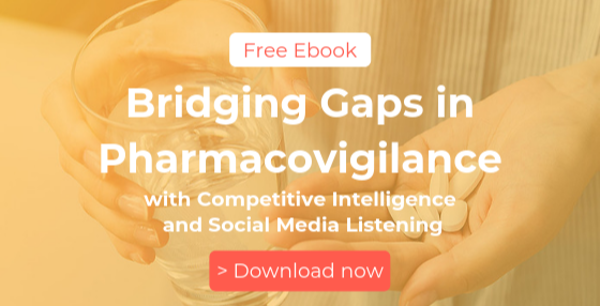Bridging Gaps in Pharmacovigilance with Social Media Intelligence
In the digital age, information is continuously at your fingertips and easily accessible to the majority of the world. With digital advancements regularly occurring, we often miss trends that are right in front of us due to a lack of attention.The healthcare and pharmaceutical industry is no exception to this.
What is Pharmacovigilance?
When referring to the healthcare and pharmaceutical sector, social media rarely comes to mind. In reality, social media intelligence permeates every industry around the world.
Pharmacovigilance (PV) is the process of monitoring, researching, collecting, analyzing, and evaluating information from patients and healthcare providers on the adverse effects of vaccines, medication, medical devices, etc. With this practice, you are able to identify new information about product hazards and prevent harm towards the consumers.
Pharmacovigilance was officially introduced in 1961 in a case report by an Australian doctor, who first suspected a link between Phocomelia (lethal fetal deformities) and Thalomide. A drug that was commonly used during pregnancy at the time, Thalidomide was given as an antiemetic and sedative agent to pregnant women. Since then, pharmacovigilance has played an important role worldwide.
When dealing with PV, adverse drug reactions (ADRs) are the main concern. ADRs are injuries that occur when taking medication and are a significant cause of morbidity and mortality worldwide. They have a considerable financial impact on healthcare. Overall, despite the increasing number of ADR reports, there are still many that remain unreported. Because of this, suggestions have been made to explore social media to be used as a tool for unreported ADRs.
So how can you deploy social networks and social media intelligence in your current pharmacovigilance processes?
Overall, social media activities can be boiled down to three key points:
- Broadcasting (risk communication): Ensure that patients and health care providers are well informed. Manage and anticipate possible crises and have a procedure in place to deal with them.
- Listening (safety data reporting): Tune in to hear the brand and patient sentiment and have a process in place to identify potential adverse effects. This can include sifting through mentions, evaluating consumer sentiment, and creating customizable dashboards to fit your needs.
- Engaging (follow up on adverse drug reactions and adverse effects: Reach out to those impacted via chatbots or other traditional methods and ensure the proper measures are taken. These include moderation processes, timely responses by a trained specialist, and social media best practices.
The aim of using social media for pharmacovigilance should be to enhance patient safety by analyzing information in an accurate, concise, and timely manner and by ensuring the efficiency and accountability of pharmacovigilance activities.
In a world where engagements are becoming more common online, it is vital that the healthcare and pharmaceutical industry implement these key points into their pharmacovigilance strategy.
Check out this infographic on how to deploy social media listening in your drug safety monitoring strategies:
Download our free guide on Bridging Gaps in Pharmacovigilance
Written by Kevin Tran
With experience in the pharmaceutical and biotechnology sector, Kevin is eager to discover new technology and methods to transcend patient healthcare. In his downtime, he enjoys traveling and playing video games.

.png?width=800&name=Drug%20Safety%20Monitoring%20Infographic%20(4).png)
